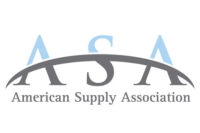On Dec. 29, 1970, Richard Nixon signed into law legislation that created one of the most consequential and controversial agencies in our government — the Occupational Safety and Health Administration.
Since its creation, OSHA has been maligned, praised and much more for its influence in the day-to-day operations of companies throughout the United States.
Is that ladder out of place? That’s an OSHA violation. Is your first-aid kit accessible and properly stocked with unexpired supplies? No? There’s an OSHA fine coming. Whether they’re feared, mocked or scorned, OSHA is an agency whose presence is felt, both in spirit and, for a number of companies, in reality.
According to OSHA, it was estimated in 1970 around 14,000 workers were killed on the job. That number fell to about 4,340 in 2009. Established in April 1971, OSHA soon developed its first standard the following month, 29 CFR 1910, commonly referred to as 1910 to those knowledgeable of OSHA’s operations (surely somebody at your company is that person). The 29 refers to Title 29, which is labor law under the Code of Federal Regulations. From 1–50, the CFR is the federal code that includes a variety of rules and regulations related to banking, defense, energy, education and, of course, labor.
Beginning with asbestos as the first, OSHA began publishing standards for workplace hazards that run the gamut. From construction safety to carcinogenic substances, scuba diving to hearing protection, OSHA’s 1910 standard is a veritable encyclopedia of information, regulation and best practices for keeping workers safe, educated and aware of workforce hazards.
Throughout this year, the ASA Safety Committee will be focusing on 1910 and some of the key provisions. Already, the committee has written about and hosted webinars on many of OSHA’s most accessed industry standards (on www.OSHA.gov), such as blood-borne pathogens, lockout/tagout, confined spaces, and hazard communications.
Finally, we also look toward the next four years as we close the books on the Obama era and open them for President Trump. Throughout the campaign, Trump spoke at length of reducing the regulatory burdens on business large and small. Specifically, he has proposed that for every regulation proposed, two should be eliminated. This is easier said than done. He is faced with a significant challenge as the final year of a president’s second term generally equates to an acceleration of rulemakings, known in Washington as “midnight regulations.”
In the past eight years, OSHA has revised or introduced standards addressing several safety topics including hazard communication, cranes and derricks, falls and walking/working surface safety, and injury/illness reporting. According to the National Association of Manufacturers and the Government Accountability Office, the previous four administrations averaged 1.6 major rules from DOL annually. In contrast, during the first seven years of President Obama’s term, DOL has finalized three major regulations annually, on average, and it likely will end up with six such regulations in 2016.
From lost wages, reduced employment and added time spent on regulatory compliance, there are costs associated with these regulations. These costs will spike to record levels in 2017 once all the previous administration’s newly imposed regulations take effect. The spike will be realized by companies both in costs and in the number of hours required to comply with anticipated reporting burdens caused by labor market regulations, reporting requirements or rules changes issued over the last decade.
The dangers always are present and the need to be vigilant always is required. But as new leadership takes effect in the United States, our expectation is that changes will occur at a more deliberate, timely and reasonable pace, rather than the constant barrage as experienced in recent years.
This article was originally titled “1910: Our focus for 2017” in the January 2017 print edition of Supply House Times.





